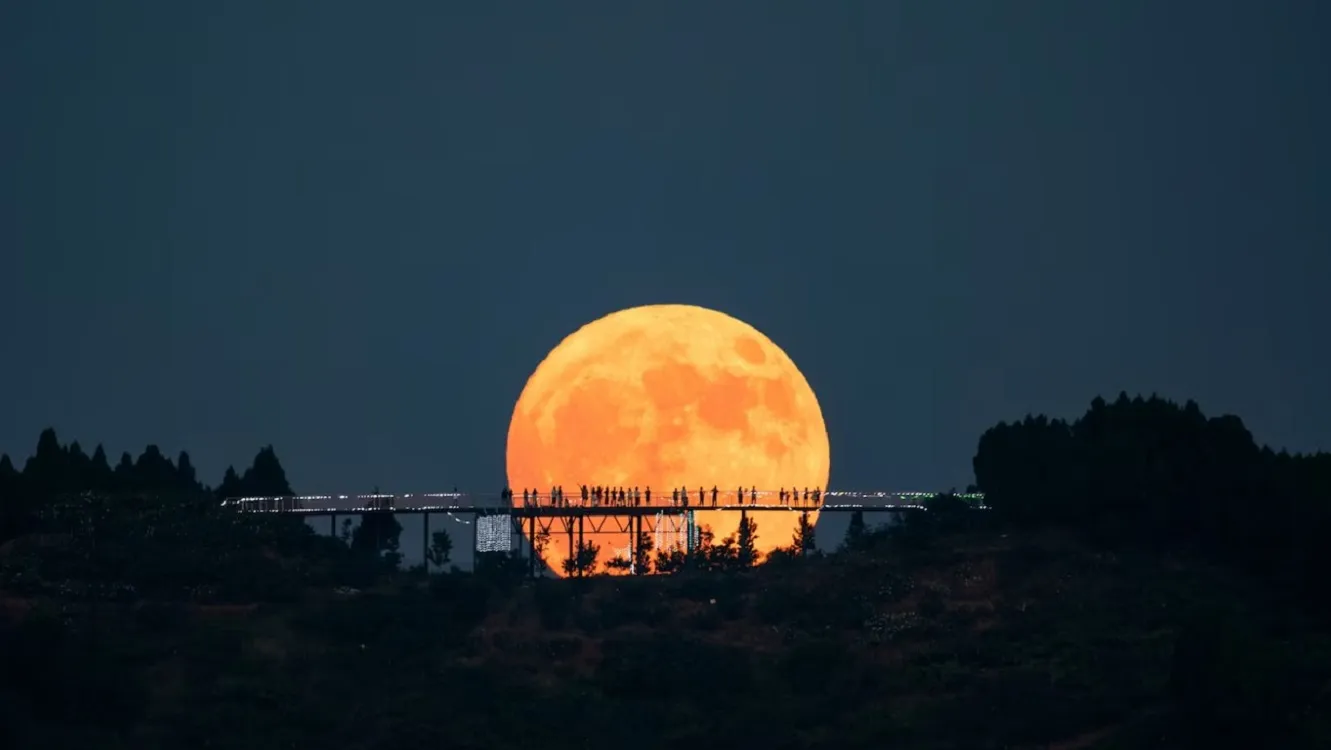


Stargazers are in for a spectacular treat tonight, November 4, 2025, as the "Beaver Moon" rises. This is the largest and brightest full moon of the year and the second of three consecutive super moon.
A super moon occurs when the moon reaches its full phase near perigee (its closest point to Earth). Tonight's moon will be approximately 17,000 miles closer to Earth than usual and it proximity makes it appear roughly 7% larger and up to 16% brighter than a typical full moon.
This particular super moon is special because the moment of closest approach coincides almost perfectly with the full moon phase, making it exceptionally dazzling. The moon won't appear this large or bright again until the next "Beaver Moon" on November 24, 2026.
The moon officially becomes full at 13:19 UTC on November 5, but the most striking view is tonight (November 4) just after moon rise.
The first hour above the eastern horizon is the best time to look.
The "moon illusion" an optical effect when the moon is compared to nearby objects will make it appear even larger.
The low angle will also give it a warm, golden-orange glow as the atmosphere scatters the blue light. No special equipment is needed. Photographers are encouraged to use landmarks or trees for scale and perspective.
Throughout the night, the supermoon will travel through the constellation Taurus, the Bull. Despite its brilliance, two companions will be visible: Aldebaran, the vivid orange star marking the bull's eye, and the Pleiades (Seven Sisters) star cluster.
The moon, Aldebaran, and the Pleiades will form a striking triangle in the night sky. The name "Beaver Moon" comes from traditional Native American and Indigenous North American calendars, marking the time when beavers build their winter lodges and trappers historically set their last traps before the rivers froze.
Comment